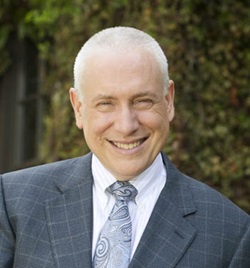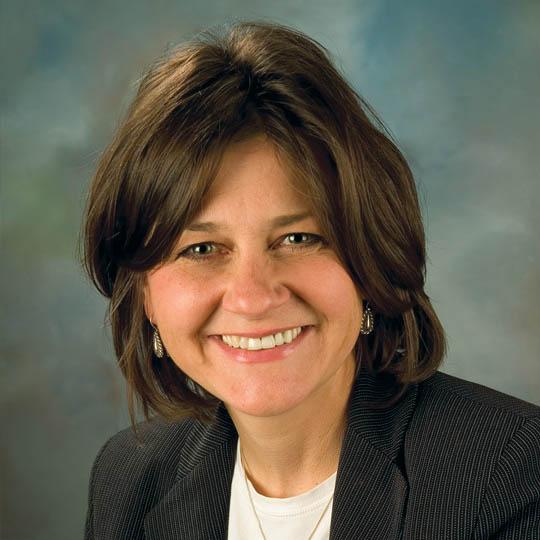Dr. Pate’s Prescription for Change
St. Luke’s and Population Health: Culture and Other Cornerstones


For St. Luke’s Health System, population health means taking accountability for the outcomes of care and the cost of that care for a defined group of people.
And because that population can be the workforce of an employer, as part of our efforts around population health, St. Luke’s has made available the same programs and initiatives that we have used in caring for our own employees. Here to explain more about St. Luke’s new department of Occupational Health and Well-being is today’s guest blogger, St. Luke’s Senior Director Beth Gray.
- David C. Pate, M.D., J.D.
St. Luke’s is integrating occupational health services with our Healthy U wellness initiative to support the employer arm of our population health strategy. Our new department is called Occupational Health and Well-being.
There are lots of good reasons that population health efforts should be approached in a comprehensive manner that includes the workplace, among them:
- Employees represent a distinct population that can be reached through work settings;
- Employees predominantly still get health insurance through their employers;
- Employees can be influenced by programs supported by employers;
- Cohesive and integrated interventions can be targeted in the workplace;
- Consumer-directed health benefit models can promote increased consumer engagement;
- Because we spend so much time at work, the workplace culture can either positively influence behavior or sabotage our efforts; and, last but not least,
- It’s the right thing to do!
My vision for St. Luke’s Occupational Health and Well-being is for the program to be committed to total worker and business health, safety, and well-being.
This means, in addition to the traditional occupational medicine focus on worker injury care and prompt, safe, return-to-work practices, that we also center on programs and practices that promote health and prevent disease.
Total business health to me means focusing on organizational engagement, workplace policies, environmental support, and the use of aggregate data toward the goal of improving the overall health of an organization.
When well-being and preventive services are available in the workplace, health care is no longer confined to providers’ offices. Wellness services can be delivered in partnership with primary care providers in the workplace by a team of health professionals, including nurses, industrial hygienists, registered dietitians, exercise physiologists, and behavioral psychologists as part of a “patient-centered medical neighborhood.”
To accomplish this, well-being care needs to be integrated into the workplace. One of the reasons St. Luke’s Healthy U outcome-based employee wellness program has been successful is that we are part of the organization. We know the people, the environment, and the opportunities.
Since we know that lifestyle choices make up at least 50 percent of an individual’s health, it’s having those connections and working as a team that make this approach work. When we are working with external clients, we strive to be just as integrated with their workplaces to determine the right strategy for each company.
We continue to evolve, and two years ago, we started sharing our approach with regional business partners.
Readers of Dr. Pate’s blog saw the recent report about some of our great collaborations in the Magic Valley area. Clear Springs and College of Southern Idaho were early adopters of this new focus. One is a world-renowned trout farm and the other a great local college. Different strategies are needed for each setting. In collaboration with the organizations’ wellness advisory committees, personalized consumer engagement strategies have been deployed, with significant improvements in health.
Several factors have contributed to this success. Here are some of the lessons we have learned along the way:
Leadership is critical.
We’ve seen the importance of leadership support to make this happen. Whether it’s Dr. Pate sharing his own health journey or St. Luke’s Chief Financial Officer Jeff Taylor supporting a discount for a healthy lunch option or leaders who serve as role models by walking between campuses to meetings, visible support has ripple effects.
In addition, we’ve had early-adopter employees who are taking a leadership role in their own health and have made significant strides in reducing their personal risk factors by quitting tobacco use, losing weight, and making other changes. These individuals are nominated by their peers for Healthy U Hero awards, which recognize employees and departments engaged in their health and making positive lifestyle changes.
Plan design is the cornerstone.
We know that our benefit plan design efforts have been foundational to the Healthy U program’s success. Outcome-based or health-contingent programs provide incentives for achieving targets or defined reasonable alternatives around modifiable health risk factors such as tobacco use and weight management.
Financial incentives, in the form of premium reductions, have helped us start the conversation with employees and family members about healthy choices, and behavior has changed with this approach.
We saw Healthy U program participation increase from approximately 45 percent to 80 percent when the Healthy U program was tied to benefit design, and a further bump to 94 percent-plus over the past four years when we linked premium reductions to healthy outcomes. We continue to see year-to-year double-digit improvement in each category: blood pressure, glucose management, Body Mass Index (BMI)/waist measurements and tobacco treatment.
It’s important to engage people when they are receptive to change.
Although extrinsic incentives started the behavior change conversation, we understand that long-term lifestyle choices are more about intrinsic motivation, or what we call “finding your why.”
We believe everyone is ready to adopt healthier choices as long as they are approached in a way that meets them where they are. The goal is to engage people when they are ready, and so we have tailored programs around those points in life when people are receptive to change.
With a female workforce of greater than 70 percent, we’d be remiss not to have a healthy pregnancy program. So participants in our Healthy U and Baby Too Program receive a free electronic activity tracking device upon registration.
We think this is the right approach, because millennials are more likely to use electronic devices to support their health and because pregnancy is a high-risk time for mom and baby, particularly around weight management issues. Our obstetrical experts tell us that heavier moms produce heavier babies, which is risky for delivery and beyond.
Participants are invited to track activity during their pregnancy, with prizes offered as further incentive. Our Best After Baby You (BABY) class, provided to participants before delivery, provides tips on how to use the device after pregnancy to continue and, as appropriate, accelerate activity. We intend to monitor the impact of the program to see whether participants continue with an active lifestyle and maintain a healthy weight over time.
Culture is key.
Science informs us that the culture of an organization can drive change. Although people don’t generally come to work to create healthy habits, we appreciate that people spend a lot of time at work, and the culture and environment of a workplace can either make it easy, convenient, and acceptable to engage in healthy behaviors or it can sabotage efforts.
As is true of the U.S. population at large, 80 percent of St. Luke’s employees either have no or low risk factors for disease, so the wellness focus primarily needs to be on keeping healthy people healthy through prevention measures, health education, incentives, and, most importantly, a supportive culture that includes an environment designed toward lasting change.
Increasing activity has been a prime focus, so we have promoted the benefits of standing or walking meetings, use of the stairs, the GreenBike partnership with SelectHealth, our alternative transportation program, and participation in activity challenges, including friendly competitions between departments and locations. Next year? Stairwell beautification!
Partnerships are the future.
We could not accomplish any of this work if it wasn’t for our partners inside and outside the organization. From St. Luke’s Benefits team, Food and Nutrition Services, Facilities and the IT/EDS Department to our providers and our community partners, including the local colleges and universities, health departments, Project Filter, and the YMCA’s Healthy Living Center, partnerships support not only greater reach and impact, but better, cost-effective solutions.
Occupational Health and Well-being’s care model is evolving, and it’s exciting. It’s an amazing time to be part of healthcare transformation as we explore creative ways to improve the health of the people in our region!
About The Author

Beth Gray is director of St. Luke's Primary Care Services.

